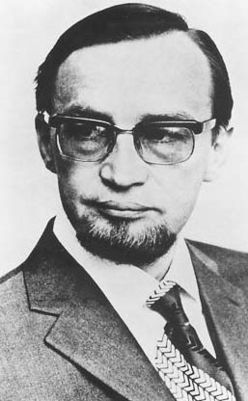Paavo Haavikko facts for kids
Quick facts for kids
Paavo Haavikko
|
|
|---|---|

Paavo Haavikko in 1960
|
|
| Born | 25 January 1931 Helsinki, Finland
|
| Died | 6 October 2008 (aged 77) Helsinki, Finland
|
Paavo Juhani Haavikko (born January 25, 1931, in Helsinki – died October 6, 2008) was a famous Finnish poet, playwright, essayist, and publisher. Many people think he was one of Finland's best writers ever. He wrote more than 70 books and his poems have been translated into 12 different languages.
Contents
Paavo Haavikko's Life Story
Paavo Haavikko was born and grew up in Helsinki, Finland. His father worked as a bookbinder and later in import business. Paavo finished school in 1951. In the same year, he published his very first book of poems.
In the 1950s, Paavo wrote several more poetry books. One of his most famous collections was called Talvipalatsi (meaning 'The Winter Palace') in 1959. He was a leader in a new style of writing called modernism in Finland. Over the years, he greatly influenced many other types of writing too. Because of his amazing work, he became the most important writer of his time in Finland after World War II.
Paavo Haavikko's first wife, Marja-Liisa Vartio, was also a writer. They had two children together. Sadly, Marja-Liisa died in 1966. After her death, Paavo stopped writing for a long time. He married Ritva Rainio in 1971.
Haavikko's Writing Career
Paavo Haavikko started as a poet, but he wrote almost every kind of literature. His plays were not often performed in regular theaters. However, a TV series called Rauta-aika (Iron Age) was based on the Finnish national epic, Kalevala, and showed his unique style. He also wrote the stories (called librettos) for two operas: Ratsumies (The Horseman) and Kuningas lähtee Ranskaan (The King Goes Forth to France). These operas had music by Aulis Sallinen.
Haavikko often set his stories in the past. But he also included ideas about modern politics. For example, in his play Agricola ja kettu (Agricola and the Fox), he mentioned real leaders like Juho Kusti Paasikivi and Joseph Stalin. He even wrote about Finland's president, Urho Kaleva Kekkonen, as if he were a Viking ruler. Paavo also wrote columns in a weekly magazine where he looked closely at Finnish politicians.
In Haavikko's poems, you often find images of kings, palaces, gardens, and forests. He was very good at describing love and relationships between people. After his first wife passed away, he started writing about different topics. These included things like money, politics, and society, which were not often written about in poetry back then.
Business Life
Besides being a writer, Paavo Haavikko was also involved in business. From 1967 to 1983, he was the literary director for the Otava publishing company. Later, from 1989 until he died, he owned his own publishing company called Art House.
He and his family also had a company that made peat, which is used as fuel. He also owned a lot of forest land. When he died, his family inherited a large amount of money.
Awards and Honours
Paavo Haavikko received many important awards for his writing:
- Aleksis Kivi Prize, Finnish Literature Society, 1966
- Pro Finlandia Medal, 1967
- Honorary Doctorate from the University of Helsinki, 1969
- Knight First Class of the White Rose of Finland, 1978
- Neustadt International Prize for Literature in 1984
- Swedish Academy Nordic Prize in 1993 (sometimes called the 'little Nobel')
- America Award, 2007
Paavo Haavikko's Works
Paavo Haavikko wrote many different kinds of books. He even wrote the stories for two operas. He was incredibly productive, publishing a new book almost every eight months!
Poetry Books
- Tiet etäisyyksiin (1951)
- Talvipalatsi (1959) (The Winter Palace)
- Puut, kaikki heidän vihreytensä (1966)
- Kaksikymmentä ja yksi (1974); English translation One and twenty (2007)
- Viiniä, kirjoitusta (1976)
- Puolustuspuhe (1977) - poems and wise sayings
- Viisi sarjaa nopeasti virtaavasta elämästä (1987)
- Toukokuu, ikuinen (1988)
- Rakkaudesta ja kuolemasta (1989)
- Talvirunoja (1990)
- Prosperon runot (2001)
Poetry Collections
- Runot 1951–1961 (1962)
- Runot 1949–1974 (1975)
- Runoelmat (1975)
- Sillat. Valitut runot (1984)
- Runot! Runot 1984–1992 (1992)
- Kirjainmerkit mustat. Runot 1949–1966 (1993)
- Tyrannin ylistys. Runot 1970–1981 (1994)
- Valitut runot (2006)
Plays
- Münchausen; Nuket: Kaksi näytelmää (1960)
- Ylilääkäri: Kaksi näytelmää (1968) (includes Ylilääkäri and Agricola ja kettu)
- Soitannollinen ilta Viipurissa 1918 (1978)
- Viisi pientä draamallista tekstiä (1981)
- Sulka: 12 näytelmää (1997) (includes Sulka (1973), Ratsumies (1974), Kuningas lähtee Ranskaan (1974), Agricola ja kettu (1968), and others)
- Airo ja Brita (1999)
- Hitlerin sateenvarjo (2004)
Other Prose
- Kullervon tarina (1982) (Kullervo's Story)
Opera Librettos
- Paavo the Great. Great Race. Great Dream. (2000)
- Ratsumies (1974) (The Horseman)
- Kuningas lähtee Ranskaan (1974) (The King Goes Forth to France)
Images for kids
See also
 In Spanish: Paavo Haavikko para niños
In Spanish: Paavo Haavikko para niños


